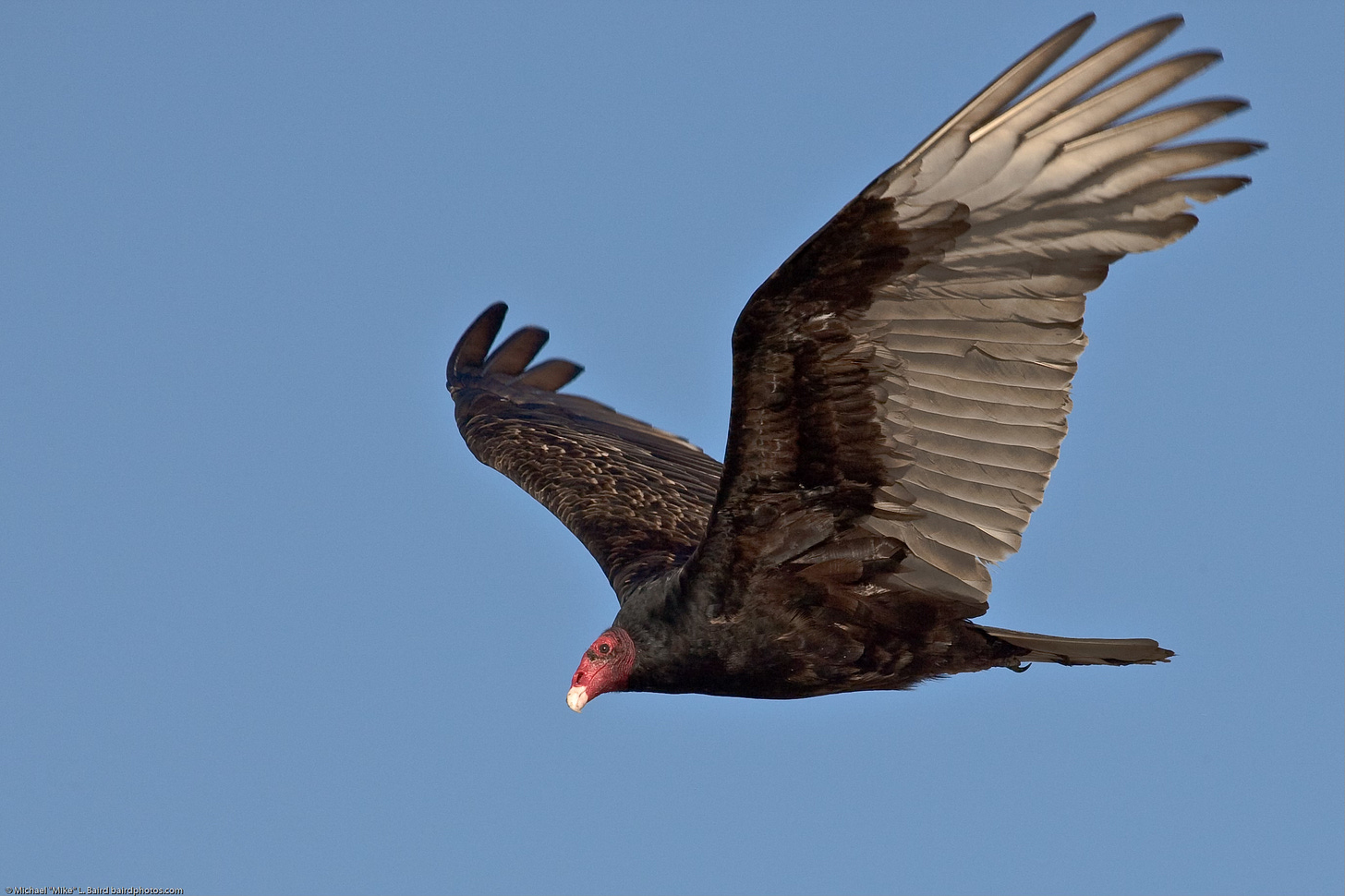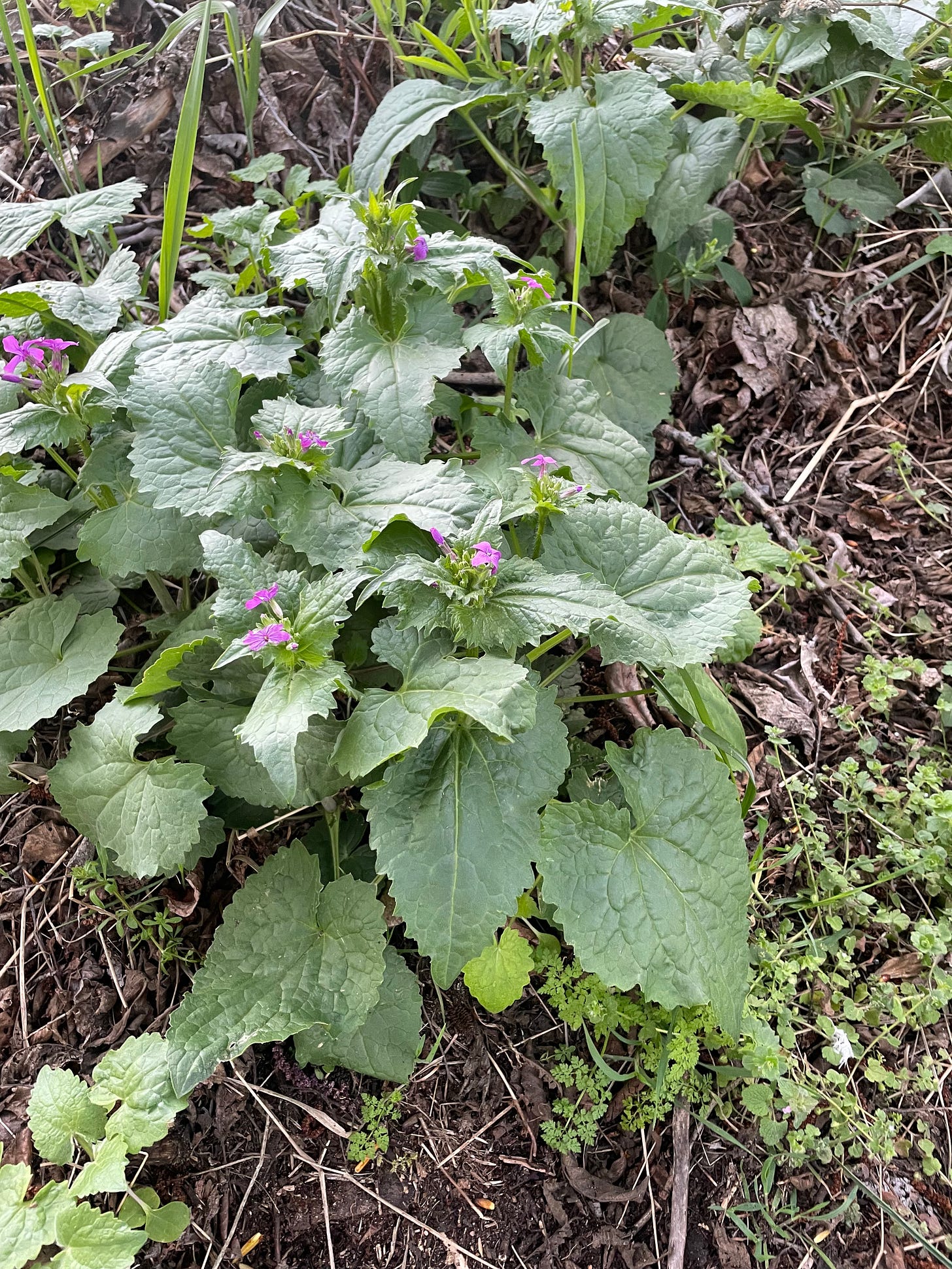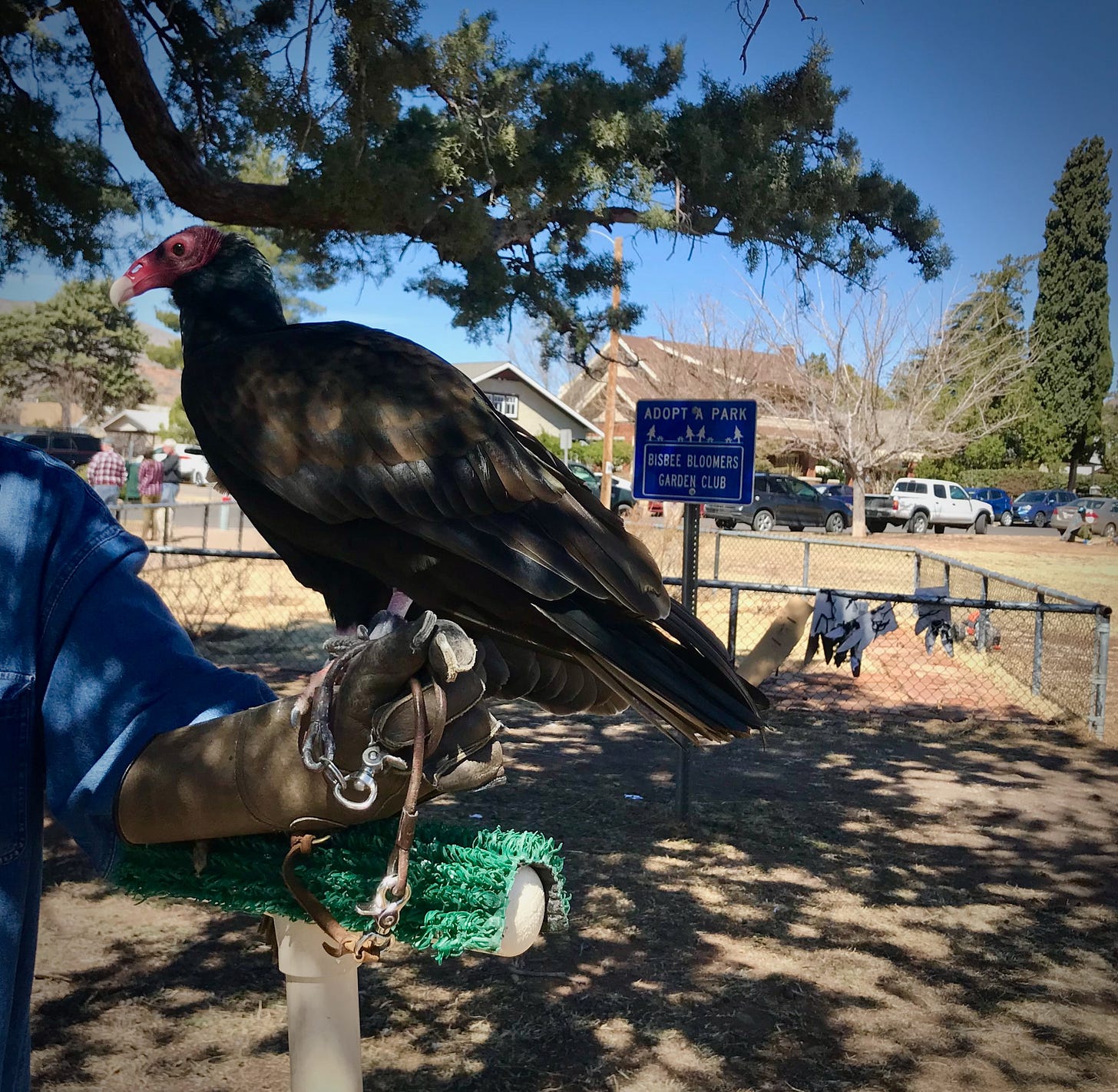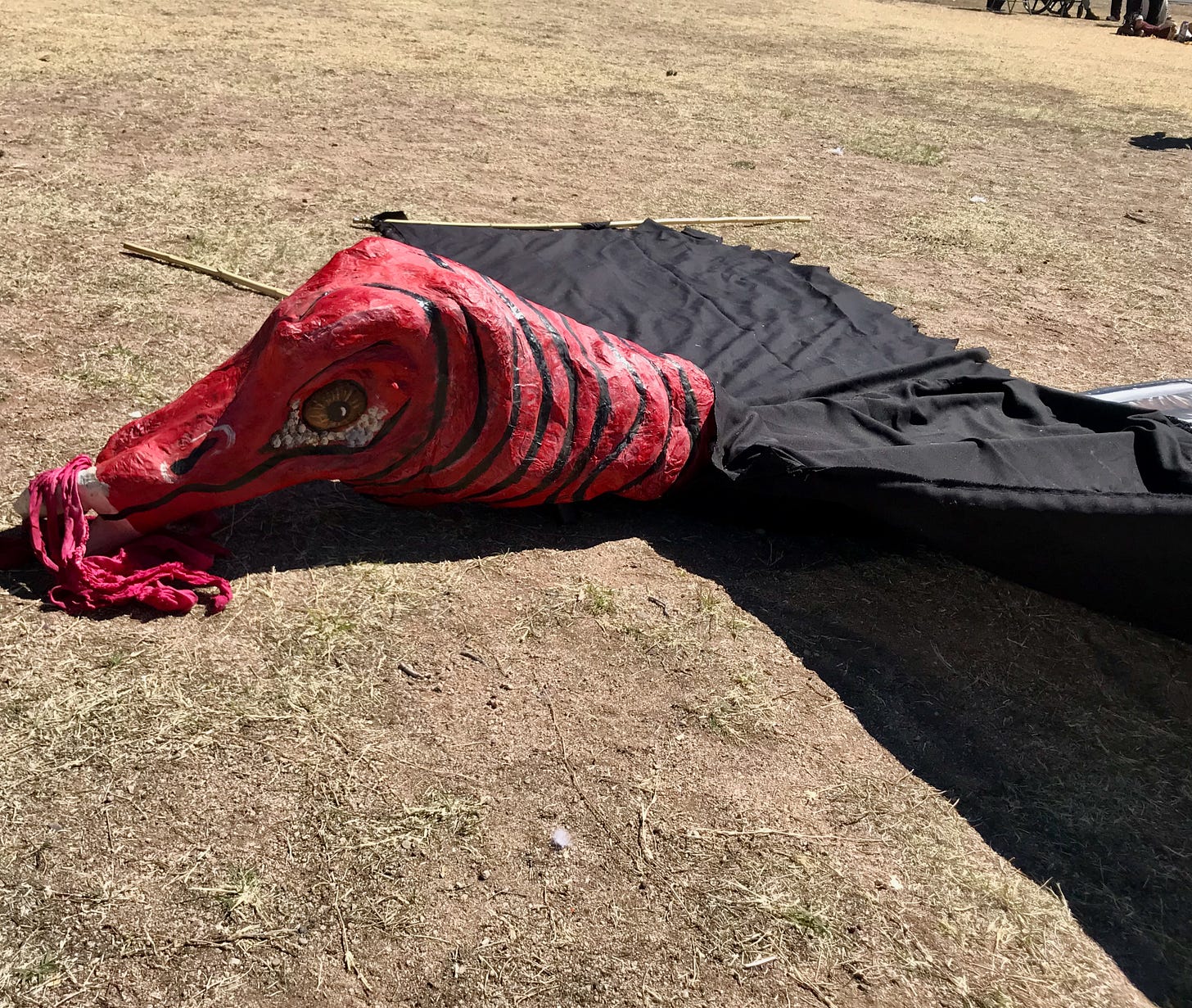The last day of March, a vulture came to visit us.
I was out in the communal garden space mentioned in our last post. Half a dozen of us were stooped over digging out the grass threatening to take over the planting beds when a shape in the sky caught my eye. A lone vulture was making a smooth descent over the roofline of the house and barn and towards the field, his approach slow enough to give us time to really pause and watch and take in the red face pointed straight at us. Some of us greeted him out loud as he skimmed slowly over the garden, seeming to eye with curiosity all these humans out laboring together, before he continued on over the neighbor’s pond and disappeared beyond their grove of trees.
I’d never had a vulture come so close on their own before; it really did feel like a visit, a fly-by to say “hey! I’m back!” Earlier that same week, coming over the rise of the hill that leads down towards my house, I thought I saw a few vultures up across the valley, and it was then I realized I hadn’t seen any for months. Of course I couldn’t help but think about the festival I took part in back in Bisbee, AZ, honoring this exact moment of the semi-migratory vulture’s return in the spring. I’m re-sharing that below, for those who missed hearing about the delightful and poignant little party Bisbee residents put on each year in honor of their avian neighbors.

Rogue Valley vultures appear to be on a slightly later schedule than those in Arizona; my first sightings came about two weeks later than they did further south. They aren’t the only animal friends reappearing with the return of spring here—the evening air is thick now with the calling of frogs. I’d forgotten how loud a chorus so many tiny amphibians can form. They’ve been a reminder of how new I am to where I’m living, how this is my first year through all the cycles of this place, and that has pushed me to keep my eyes and ears open to who else is returning. Who else might be looking for a neighborly hello? We make so much of the flower friends who come back with such a splash—it’s good to remember who else might be hiding in the mud or on the edges of our sight.
In many ways, it’s nice to be a newbie. I take less for granted, and by necessity must make fewer assumptions. The last frost date is a solid month or more later than some places in which I have lived, throwing my garden planning for a loop. This too has made me pay more attention to what is already here. Rather than just focusing on what I can plant, I’ve been reminded that early spring is a bountiful time for foraging. There’s dandelion and dead nettle plenty in my backyard, and I just learned that I can try tasting a plant called honesty that I’ve noticed springing up on the path along the nearby creek. (If you’re curious about foraging, our friend Amanda from eClips has a great intro to the ins-and-outs of foraging, including thoughts on ethics and safety, in the South Seattle Emerald. Many of the plants highlighted are not exclusive to the Seattle area.)
Foraging is one of those activities that can require us to break down our mental categories, to take what we once filed under ‘weed’ and label it instead as ‘food’ or ‘medicine.’ And they remind us, yet again, that the property lines we draw don’t really fit onto how the physical world actually works; the green plants one forages in spring have a tendency to go where they are wanted by the land, not where they are told by humans. If we take this not as an obstacle but a gift, we can learn to understand what their growth is communicating: the weeds that are growing in your yard can tell you a lot about your soil and what’s happening underneath.
Frogs, weeds, vultures—I’m happy to be amassing acquaintance with the springtime residents in the valley here. The last two seasons have seen me bustling among my human community, trying to forge connections and relationships there. That’s coming together, bit by bit. But humans are never the only ones to meet in the places we live. Thanks to the vulture who came to say hello and made sure I remembered that.
You can check out our original piece on the Return of the Turkey Vulture event below or on the site.
As always, thanks for reading. Until next time,
Meg
Return of the Turkey Vulture
Finding place-based ways to mark the seasons and celebrate migration
Originally published April 10, 2022
The red nose on the bird’s face looks plastic, I think, like a piece from a Mr. Potato Head set. Flip it sideways and you might have a Dali-esque mouth. Yet clipped in place behind this turkey vulture’s beak, it's not at all a toy, but a highly sensitive food detection device—if your food happens to be decaying flesh. Smell is rare in the avian world, but turkey vultures have a perforated nostril to take in all that extra putrefying gas from carrion far below, and extra-large olfactory processing capabilities in their brains. Other scavenging birds, like condors, can’t actually smell the roadkill on which they feast; instead, they follow the turkey vultures and muscle their way into the meal.
I'm only a few feet from the vulture, carefully managed by an handler from a wildlife refuge near Phoenix. He's down in Bisbee on this Saturday in mid-March for the annual “Return of the Turkey Vulture” celebration. The festival induces curious looks from many visitors, be they Easterners unfamiliar with vultures or Westerners for whom the birds are so common that all of the hoopla feels rather puzzling. The latter may live where the birds are permanent residents, but here in Bisbee, the local turkey vulture population is semi-migratory, heading out each fall to destinations across South America and returning in March.
You can set your clock or your calendar by them, I've been told, as they arrive almost exactly the same day each spring, and once here follow the sun each day as it traces its way up the canyon. As the festival approaches, rumors of the birds begin circulating, but I won’t see any until the day after, when I spot a whole group circling on late afternoon thermals, sticking to the southside hills where they catch the most light.
“The Return of the Turkey Vulture” would make a good title for a campy horror flick, but the event itself is fairly low-key, taking place at the regular Saturday farmers market. Market attendance is easily double its usual as spectators stare and take photos of the guest vulture while waiting for the main event, a short parade around the park featuring vulture puppets that fill the width of a whole street. The parade ends with a drum and dance circle, and the crowd begins to dissipate. (You can watch video of the parade and see a few of the clever vulture costumes on local Bisbee videographer Mike Foster’s page.)
One might laugh off the festivities as another typical Bisbee quirk, an event for the artsy weirdos. Many in the plaza do roughly that. “This is so Bisbee,” I overhear. But it strikes me as important that this town so close to the border —close enough that I bicycled to and from Mexico one day for lunch—has found a way to honor the act of migrating, and to collectively welcome visitors from further south. What’s more, while they could have chosen any number of species—the area is a hotspot in spring for many birds on the move—they opted to pick a bird often ignored and sometimes even reviled, and found a way to celebrate its place in the community. The vultures’ easy identification and visibility may have made the selection feel obvious, but still: this is no butterfly festival. Not only does the event offer acceptance for a form of passport-less migrant (in defiance of the white and green border patrol trucks on the highway not so far from here), but it welcomes the haggard bone-picker rather than the wealthy and well-plumed.
There’s another layer here, too, in this human welcoming of an animal relation back home. Ought we not have more celebrations such as this, commemorating our non-human kin as they return from their travels abroad? This is the type of culture-making that reminds us we are not alone or separate, but dependent upon so many others. We may not often think of ourselves as reliant upon vultures, but the very thing that causes some to grimace in disgust at them—their scavenging—helps keep in check diseases that might otherwise spread to more animals as well as humans.
Many places have spring festivals focused on flowers, of course. Here in the desert, while plant life is surely stirring, the effect is somewhat different than the succeeding waves of crocuses, daffodils, and tulips in other regions. The colors are more muted, and sparser. Sitting in the city park the day after the parade, staring at the vultures aloft above the red hills, I will appreciate again that the residents didn’t try to copy a tradition from elsewhere. Such attempts at replicating the seasonality of some other region almost inevitably result in sensory discordance (just consider the decking of Los Angeles with imported evergreen boughs in December). There are signs of the seasons plenty enough in each place if one learns to see them, and if you can be content with disconnecting from a strangely hegemonic conception of what “should” exist in a given time in each place. From where I’m finishing this piece right now—Ohlone lands on the coast of California—flowering trees and orange poppies are marking winter’s exit, along with the occasional rose planted by some more enthusiastic gardeners. But back in Bisbee, it’s black and red vultures.
So much to learn from a tiny little community party in a park, and possibly even more to be learned from watching the vultures themselves—the simplicity with which some come and go with the seasons, while others stay put; the quietness with which they clean up the messes we humans leave sprawled on the sides of highways and mountain roads; their interdependence with a whole score of bacteria that keep them free of the diseases whose spread from roadkill to others they stop with their very stomachs.
We often draw metaphors or lessons from flora or fauna we find attractive—again, celebrating the butterfly for its symbiotic relationship with flowers—but there’s really no reason to so limit ourselves. There are many ways to be in this world, and while some of us may root in like young plants after a warm rain, others may find our niche in traveling the back roads, noses alert for danger and uncommon resources.
Flower ways and vulture ways: both can mean springtime.







